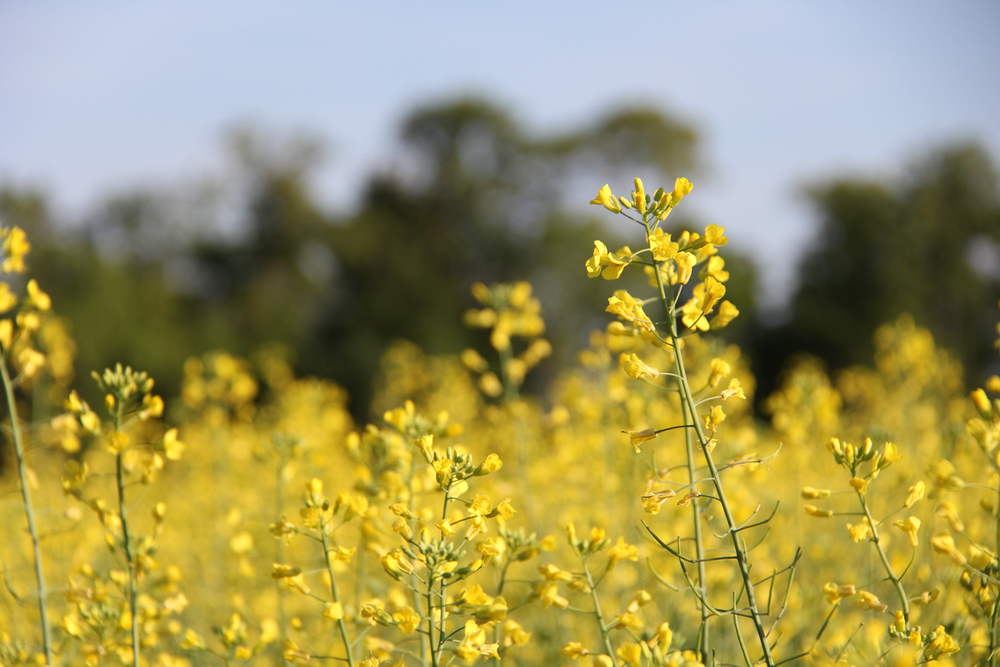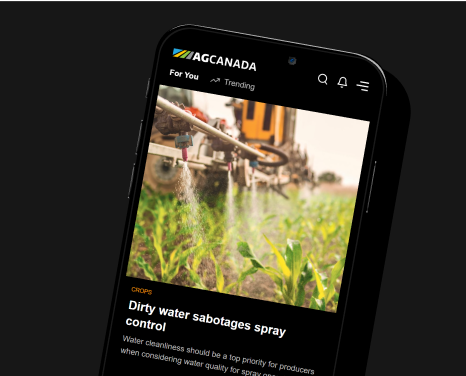Canada, China meet over canola stalemate
Officials from both countries met Oct. 28 in Geneva under the auspices of the World Trade Organization
| 5 min read
By Allan Dawson

The Canola Council of Canada hopes Canada and China’s first meeting on the canola seed dispute will lead to a resumption of Canadian canola seed exports to what was Canada’s biggest export customer. Photo: File/Greg Berg
[UPDATED: Oct. 31, 2019] Glacier FarmMedia – Canada and China finally had a face-to-face meeting *Oct. 28 in Geneva on China’s de facto import ban of Canadian canola seed.
The private consultation under the auspices of the World Trade Organization (WTO) went well, according to Brian Innes, the Canola Council of Canada’s *vice-president of public affairs.
“It was a one day meeting and a very good meeting,” Innes said in an interview from Geneva.
“We hope that the opening of our seed exports can follow from the positive dialogue that happened today.
“We will be waiting and working with the government to understand what information has been provided by China so that we can recommend the best path forward on behalf of the canola industry.”
Why it matters: The canola council hopes this meeting will lead to restoring the Chinese market. In March, China, which had been Canada’s biggest canola seed customer, abruptly slowed imports to a trickle, claiming Canadian canola was contaminated with a virulent form of the canola fungal disease blackleg and weed seeds. But many suspect China’s actions were meant to demonstrate displeasure after Canada arrested Huawei executive Meng Wanzhou in December at the request of the United States.
The canola council, which represents the canola industry, including farmers, didn’t take part in the meeting, but was in Geneva to “provide input and guidance,” to the Canadian government, Innes said.
Global Affairs Canada had not yet responded to a request for more information by press time.
“We understand the meeting had good dialogue,” Innes said. “For us that’s really important. It’s really important for us to have good dialogue between our two governments because that’s the best way we see to regain access to the Chinese market.
“It’s the first face-to-face discussion (between Canada and China) we’ve seen since this issue happened in early March and that’s quite a positive sign.”
Canada triggered the meeting Sept. 6 when it requested one through the WTO, the agency that oversees trade rules members have agreed to follow. It’s the first formal step in the WTO trade dispute settlement process.
The canola council will discuss what the federal government should do next, Innes said.
“We don’t have a clear timeline coming out today,” he said. “The government will need to think about the information received, and us as an industry will need to reflect with the value chain on the best path forward.”
If talks between Canada and China fail to resolve the issue, Canada can request adjudication by a WTO panel.
While every country has the right under WTO rules to protect its plants from imported pests, countries that restrict imports due to sanitary and phytosanitary concerns must demonstrate scientifically the threat is real and take precautionary measures that cause the least disruption to trade, Innes said.
The canola council’s preference is for Canada and China to resolve its differences outside the WTO process but if they can’t all options, including the WTO, are open, he added.
“What we know as a canola industry taking WTO action is not our preferred approach to resolving the issue,” Innes said. “But we have rules and rules are very important for us and for agriculture to have stable trade so all options continue to be on the table…”
There’s no guarantee Canada will win the case at the WTO, University of Manitoba agricultural economist Ryan Cardwell said in an interview Sept. 12 — a message he repeated Oct 25. in Brandon while speaking at the Keystone Agricultural Producers’ advisory council meeting.
China claims it doesn’t have the L. maculans race of blackleg ubiquitous in Canada and therefore imported Canadian canola poses a risk.
Canada doesn’t know whether China has the race or not, Inness said. However, Canadian officials maintain the risk to Chinese canola is low because Chinese crushing plants are located near ports away from canola growing areas.
If the WTO sides with Canada, China might agree to resume importing Canadian canola, Cardwell said. But if it doesn’t, and Canada continues the fight, it could take years to settle.
Canada’s battle to force the Unites States to drop its Country Origin of Labelling (COOL) policy, which discriminated against imported Canadian hogs and cattle, took seven years, he said.
Even if the WTO allows Canada to legally impose tariffs on Chinese imports in retaliation, it could prove a ‘pyrrhic victory,” Cardwell wrote in a paper with and fellow agricultural economist Derek Brewin.
“The decision to proceed with retaliation, should Canada win a dispute, is not an obvious one.”
That’s because Canada’s goal is not punishing China with retaliatory tariffs, but to regain access to the Chinese market.
“Retaliation is unambiguously welfare reducing, and is only helpful if it coerces respondent members into compliance,” Cardwell and Brewin wrote in their paper entitled ‘Blackleg or Blackmail? Economics of the Canada–China canola trade dispute.’
Imposing tariffs on Chinese imports could hurt Canadian consumers and economy more than it helps, Cardwell warned.
China also buys a lot of other crops from Canada, including wheat, and canola oil and meal. If Canada punishes China, China might stop importing those products, Bruce Burnett, MarketFarms’ director of markets & weather, told the KAP meeting
In March China revoked the canola export registrations for Canada’s two largest grain exporters — Richardson International and Viterra — and stepped up inspections of canola exported to China by other Canadian companies. As a result Canadian canola seed exports to China slowed to a trickle.
Canada exported 4.7 million tonnes of canola to China in 2018-19. Canadian Grain Commission figures show Canadian canola seed exports to China during the first two months of the current crop year (August and September) of 182,600 tonnes are down 70 per cent compared to the same period a year ago.
A Chinese government website translated by Google says officials detected Leptosphaeria maculans (Blackleg), Pseudomonas syringae pv. Maculicola (bacterial leaf sport), Avena ludoviciana Durien (sterile wild oat), genus of non-Chinese species (Xanthium sp.) (cocklebur), Amaranthus palmeri S. Watson (Palmer Amaranth), and other quarantine pests, from imported Canadian rapeseed (canola).
*UPDATE: The article previously stated the meeting between Canada and China was on Oct. 29.
*UPDATE: The article perviously indicated Brian Innes as vice-president of communications.
— Allan Dawson is a reporter with the Manitoba Co-operator.


